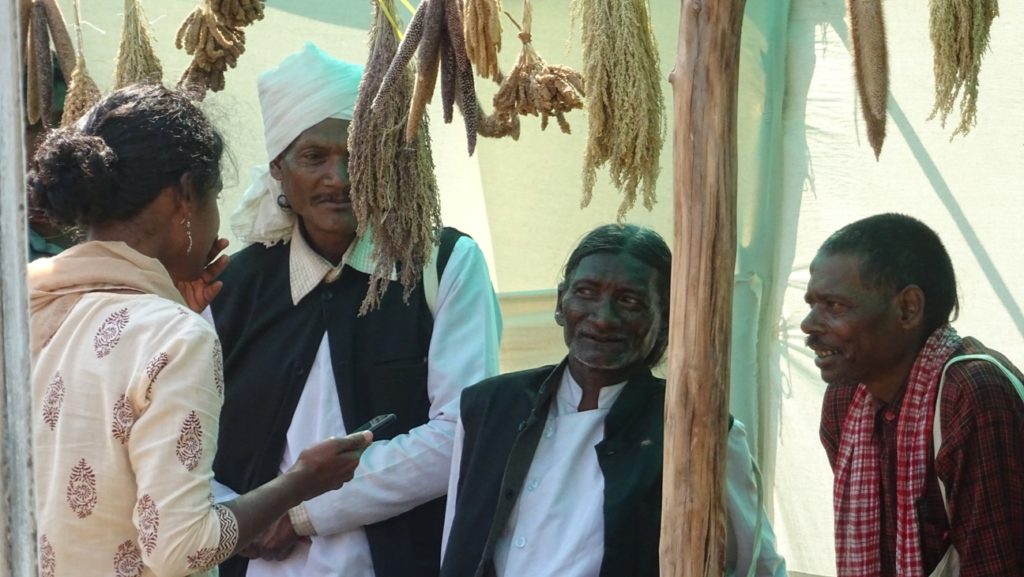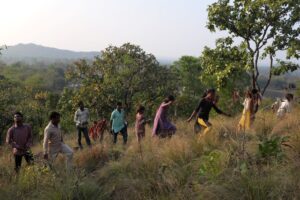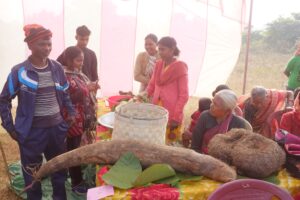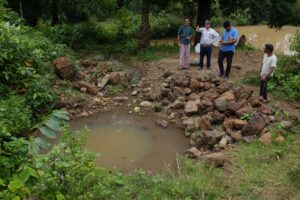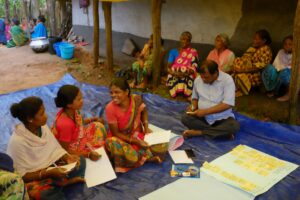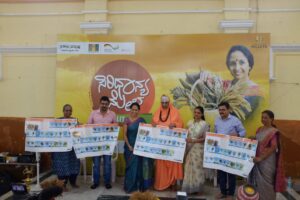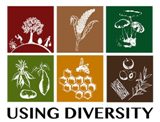The Using Diversity Network’s Annual Meeting for 2019 was held in Hasanur, Tamilnadu from the 14th to the 16th of February 2019. The annual meeting brought together 28 project fellows and farmers from the 8 project areas of Central India; 15 fellows and community representatives from Western Ghats; project coordinators from Central India and Western Ghats – Rohan Mukerjee and G. Ramachandran; advisers and representatives of partner organisations – Naresh Biswas (Nirman), Ramgulam Sinha (PRERAK), Krishna Prasad (Sahaja Samrudha), Sanjiv (Jharkhand Vikas Parishand), Snehlata Nath, Sumin George, Bhavya and Mahadesha (Keystone Foundation), Panduranga Hegde (Prakruti/Appiko) and Madhu Ramnath (NTFP EP, India)
14th February 2019
Introduction and Welcome –
Snehlata Nath welcomed all the participants and provided a brief background of Keystone Foundation and its work in the region. Bhavya and Ramgulam opened the program with songs which was followed by a round of introductions of all participants.
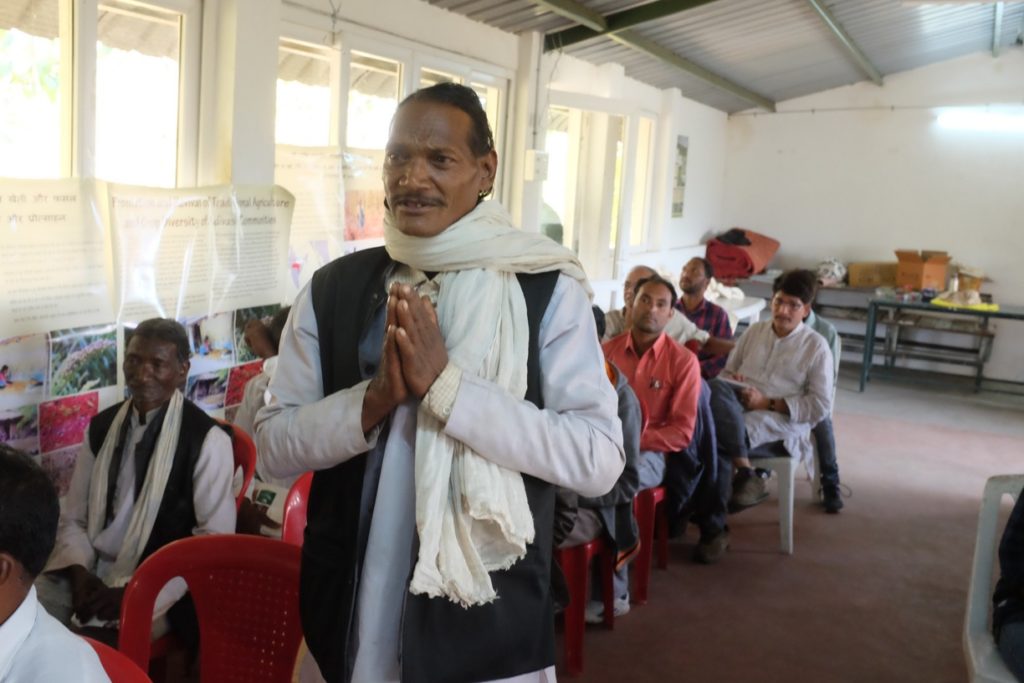
Bhavya provided a background of the area and Keystone’s work here. She pointed out that the area is famous for elephants and tigers. The Sathyamangalam Tiger Reserve was created in 2013 and it brought about lots of changes in the rights of the communities residing in the area. This area comprises the meeting of the Eastern and Western Ghats. The local communities cultivate a variety of millets and depend on their forests for a variety of NTFP and uncultivated food like honey, amla and semar grass. In 2006 Keystone Foundation commenced work in this area under the Darwin project. Currently Keystone’s activities include promotion of livelihoods of the local communities, a barefoot ecologists program which facilitates community led monitoring of their forests, and conducting environmental awareness programs with children. Keystone also facilitated the formation of the Aadhimalai Pazhangudiyinar Producer Company Ltd. which is a collective of tribal producers of the Nilgiri Biosphere Reserve. Aadhimalai has a production centre at Hasanur and collects forest and agriculture produce directly from the tribal communities, processes it and markets the produce. Snehlata also pointed out that this region was also famous for being the erstwhile stomping ground of the notorious bandit Veerappan who was responsible for killing numerous elephants in the area.
Exposure visit to Irula village of Bejalatty
Bejalatty is an Erula village located in the core area of Sathyamangalam Tiger Reserve. Bhavya pointed out that as a result of being in the core area a number of restrictions are imposed on movement of outsiders as well as villagers. Bhavya shared that Keystone Foundation’s barefoot ecologist program has been running for 10 years and through the program members of the local community are trained to monitor their natural surroundings. The barefoot ecologists gather data and information pertaining to various aspects of the forests and the environment. They monitor changes in the forests, trees and wildlife and present their findings to the Gram Sabha, the Gram Sabha than has discussions on the findings which help in formulation of future strategies. Bejalatty has 2 barefoot ecologists – Vellasamy and Muthusamy. We met Vellasamy who showed us around his village. Vellasamy first showed the participants Bejalatty’s community seed bank. He pointed out that in order to combat high costs of purchasing seeds they had formed a community seed bank to make seeds available to local farmers. The community seed bank is managed by the barefoot ecologists and currently had a variety of little millets, beans, pulses and castor seeds.
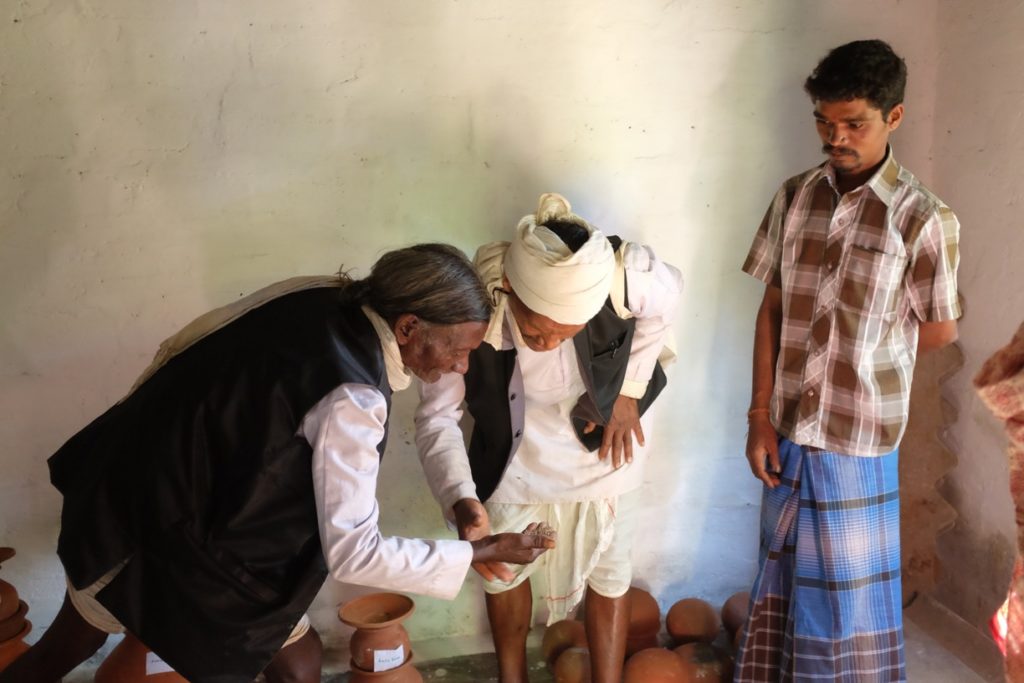
The participants then weaved their way through the Erula’s houses to their agricultural fields. Vellasamy pointed out that originally 11 families settled here from the Nilgiris, around four generations ago. They carry out rain fed agriculture in 2 seasons –
- April – They sow beans (mostly for sale) and Maize.
- July – they sow millet varieties and pulses.
Livestock rearing has reduced substantially due to restrictions on grazing. With the reduction in livestock farmers have largely shifted to machine harvesting of crops. Wild boar crop depredation is a major challenge faced by local farmers.
The entire landscape was dominated by 2 massive cliffs. The villagers have classified one of the cliffs as Pennupare (Male) and the other cliff on which honey combs are formed as Aanpare (Female). The traditional practice of honey harvesting has dwindled substantially. Currently amongst all the 6 villages of the area there is only one honey hunter with the skill to harvest from the cliff.
Visit to Aadhimalai Production Centre at Hasanur –
On their way back from Bejalatty the participants visited the Asdhimala production centre at Hasanur. In consultation with the leaders of tribal communities in the Nilgiri Biosphere Reserve a Farmer Producer Company named Aadimalai was formed in 2013. Today, Aadhimalai is a collective of 1609 shareholders who feel empowered as owners of a unique company procuring and processing over 30 Tonnes of NTFP and agri produce, and having over 50 different varieties of products.
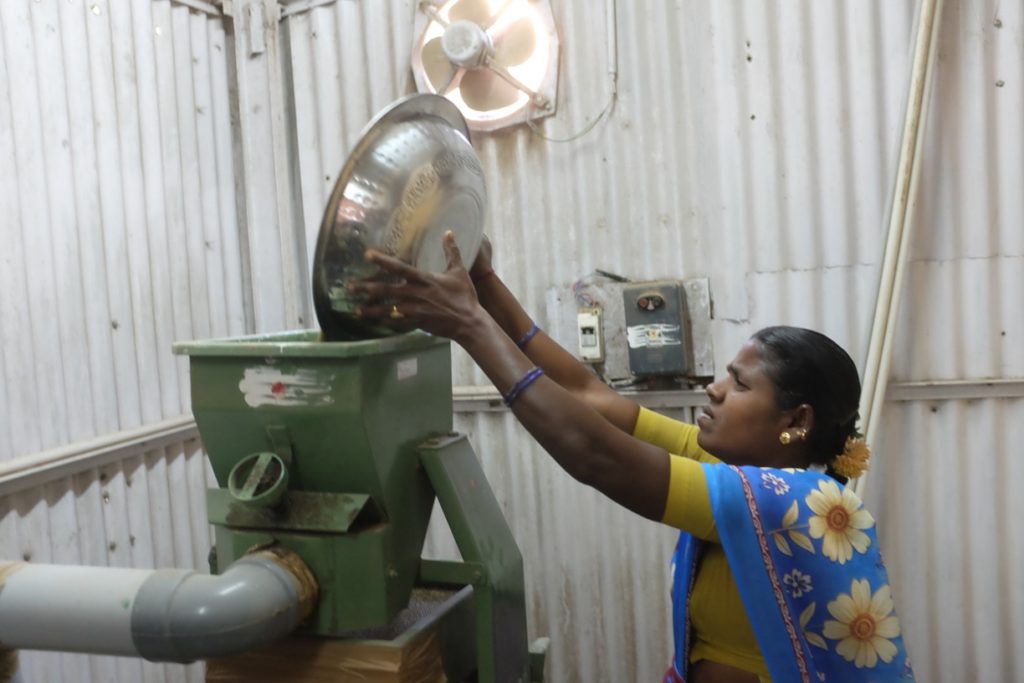
All the processing work is done in the processing centres which like the Hasanur centre are located in tribal villages. Aadhimalai employ women from the villages to do the value addition work, thereby generating employment. The participants got a firsthand view of the different production and packaging processes employed to produce a variety of value added forest and agricultural products like honey, amla candy, pickles, millet cookies and jams. The millet processing machines, honey filtration process, and the solar dryer were of particular interest to the participants.
Naresh Biswas (Nirman) – “Baiga Vanahar” Presentation of findings of research on uncultivated food of the Baigas of Dindori District, Madhya Pradesh
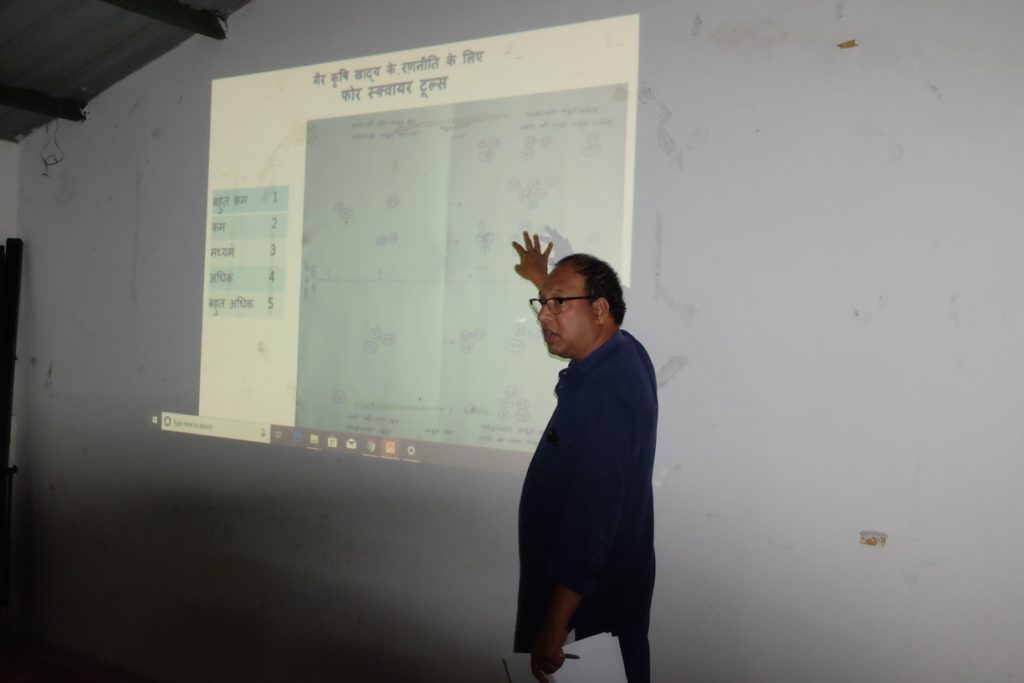
Naresh Biswas of Nirmaan, MP shared the findings of an intensive survey on the uncultivated food of the Baigas of Dindori district. The study was carried out by Naresh Biswas, Rajeev Khedkar and supported on the ground by Heeralal Gaund, Itwari Baiga, Nanhu Baiga and Bajari Baiga. The study revealed several interesting facts which included –
- The Baigas use 163 uncultivated / wild foods of which 45 are classified as major and 45 are tree based.
- The study revealed and 24% of the UF are fruits which are largely consumed by children. Naresh feels that this could be major reason for the low incidence of Malnutrition among Baiga children.
- The study reveals that a majority of the uncultivated foods are used solely for self consumption.
The findings of the study will help improve the understanding of the Baigas dependence on wild food, the importance of a variety of tree and plant species and help improve protection and management of the regions forests keeping the needs of the Baigas in mind. Similar studies can be replicated in other areas and can prove vital in planning forest conservation and management strategies keeping the needs of local communities at the core. Such studies can be of particular use and importance in designing and planning plantation program in tribal areas as they will help identify the key species for the local community as well as their status.
15th February 2019
Community Seed and Uncultivated Food Exhibition
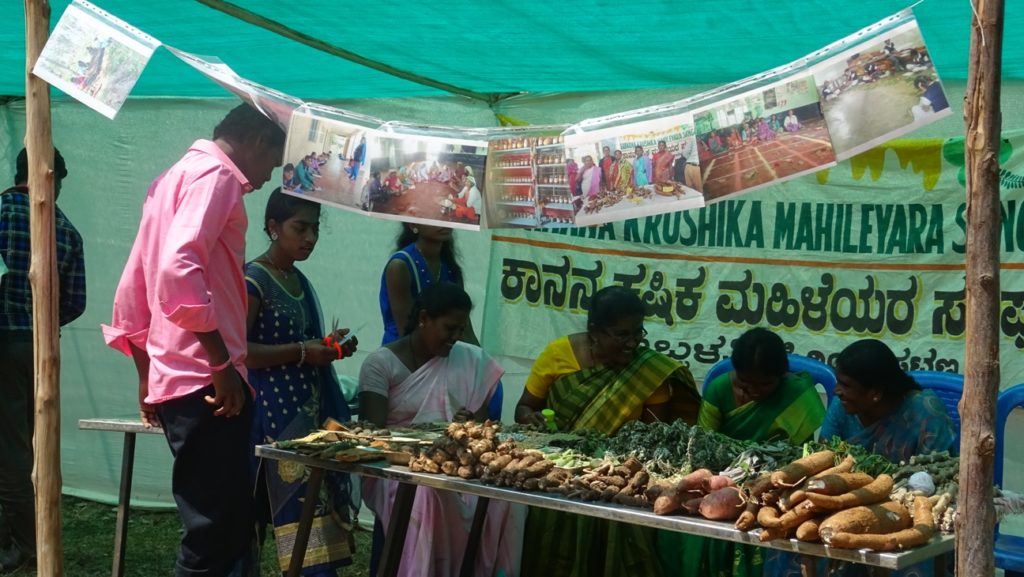
On the morning of the 15th a Seed and Uncultivated Food Exhibition was organised in the compound of TAMS a local community organisation of Hasanur. The fellows and community representatives from the different project areas across Central India and Western Ghats displayed a rich diversity of traditional crops like millets, maize, pulses, kidney beans as well as various uncultivated foods such as tubers, fruits, flowers and seeds that they get from their rich forests.
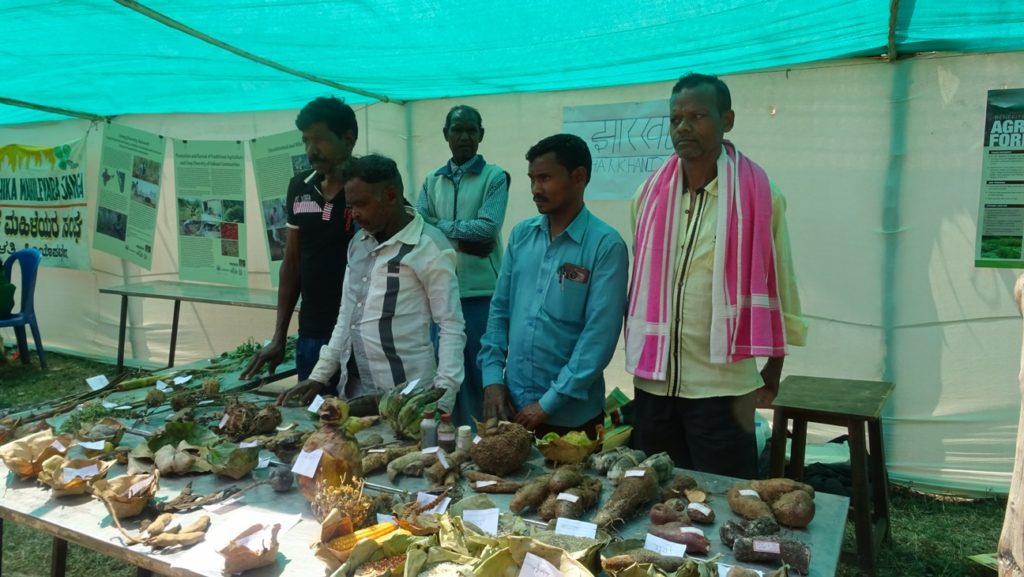
The exhibition was inaugurated by Balan of TAMS who welcomed all the participants and lauded the efforts of the UD network and its partners to highlight the importance of traditional crops and seeds, and uncultivated food to the diet of adivasi and forest dwelling communities. Ramgulam Sinha (PRERAK) shared his experiences with seeds and the wide variety of crops grown by communities across India. Naresh Biswas (Nirman) shared his experiences with wild food, their numerous benefits and importance to indigenous communities as well as threats to their survival and the need to work for their conservation as well as their continued use by indigenous communities. The exhibition on attracted much local interest and fostered invaluable exchange of knowledge of traditional crops, agricultural practices, uncultivated food, preparation process and recipes between the different communities from various parts of India. The participants were treated to a delicious traditional lunch of millets, pulses, tubers and leafy vegetables.
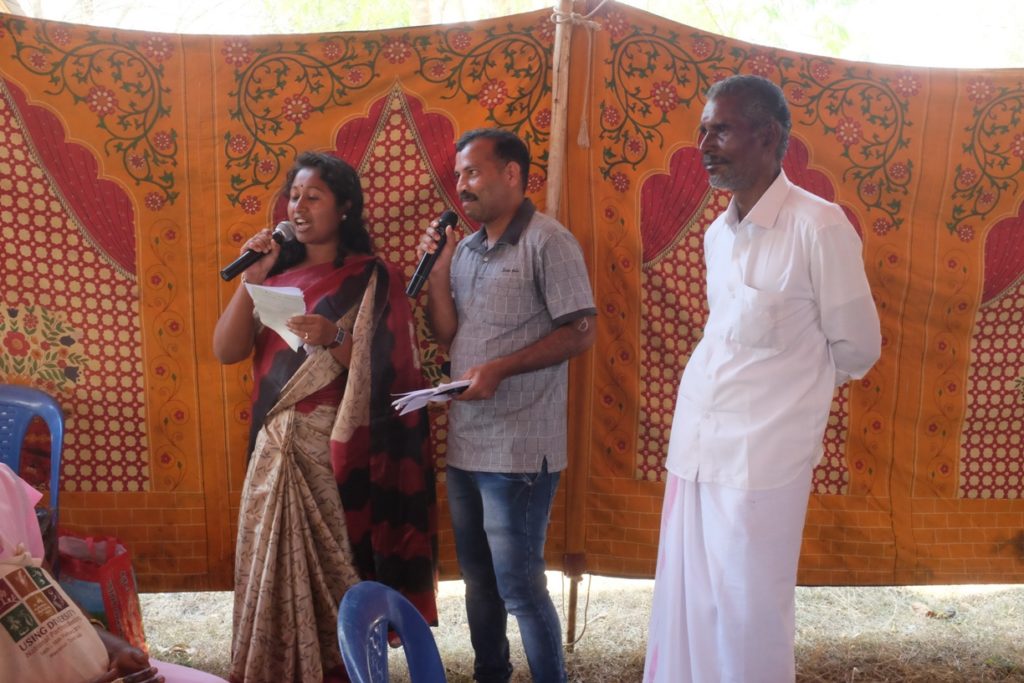
Session on Plant identification – Anita
Anita (Deputy Director, Keystone Foundation) facilitated a session with program fellows on surveying uncultivated plants and trees for scientific identification. She explained and demonstrated photographing plants, collection of plant samples, pressing plant specimens using a herbarium press and compiling a herbarium of uncultivated food plants and trees of their areas. This will help facilitated scientific identification of the different UF plants and trees which will help comparison of UF used by different communities and will also help in planning strategies for the conservation of different UF plants and trees.
16th February 2019
Field visit to Havinamule, Soliga village in BRT Tiger Reserve –
On the 16th of February 2019 all the participants visited the Soliga village of Havinamule, in the BRT Tiger Reserve, in Chamarajanagar District of Karnataka. The participants were greeted with drums and invited to participate in a community puja to inaugurate a memorial of tribal freedom fighter Birsa Munda. The participants representing adivasi communities from across India were filled with pride to be part of the community ceremony to inaugurate the memorial to the legendary adivasi Birsa Munda.
The puja was followed by an interaction between Soliga leaders and villagers and the UD participants. The Soliga leaders and villagers shared their experiences with the struggle to receive CFR in the core area of a Tiger Reserve.
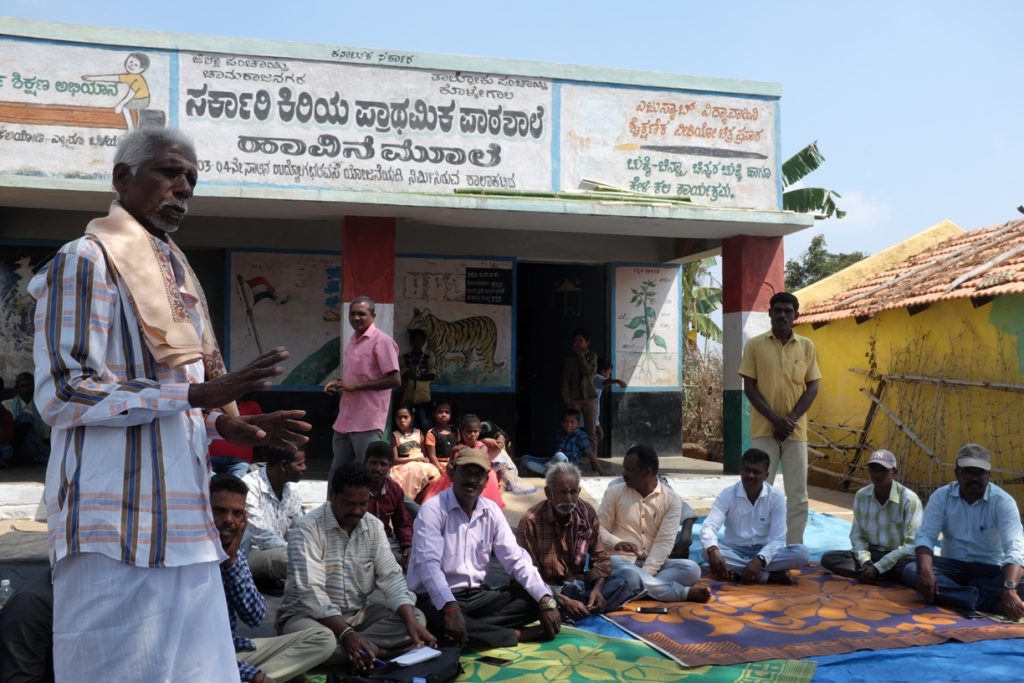
Some of the key points they shared were:
- The three communities in this area, the Soligas, the Jenukuruba and Kurba have received 3000 IFR titles. They have applied for 115 CFR titles and received 85.
- In the first 2 years after FRA was introduced the community worked to understand the act properly and spread awareness. From 2008 onwards they started applying for IFR titles and then applied for CFR titles.
- They first had village level meetings, then circle meetings involving 10-15 villages, then Block meetings followed by District and State level meetings.
- Initially they faced resistance from the Forest Department in their quest for IFR and CFR titles. The Forest Department and authorities were not providing proper responses to their claims. They then came together as a community and led a movement for their rights with included demonstrations outside the DC’s office as well as other concerned departments. They finally received 85 CFR titles inside the core area.
- When the decisions of the FRCs got to the Block, District and State level the process of reviewing and passing the applications are made easier by the presence of adivasi members at each level.
- This is the first instance of CFRs being received within the core area of a tiger reserve and the community pays homage to their elders who pioneered the movement for CFR titles but are no longer with them.
- The community pointed out that only in the fire season they don’t go to the forests for collection. In the fire season the community works with and supports the Forest Department to put out forest fires.
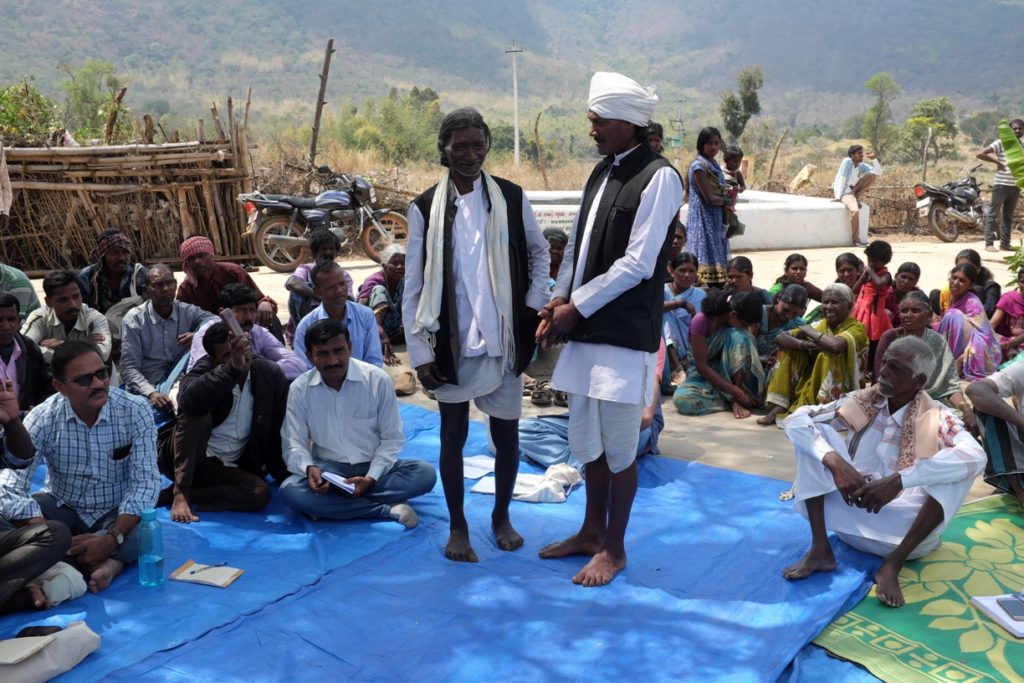
Naresh Biswas then shared the experience of the Baigas of Baigachak in Dindori District of MP who have received habitat rights.
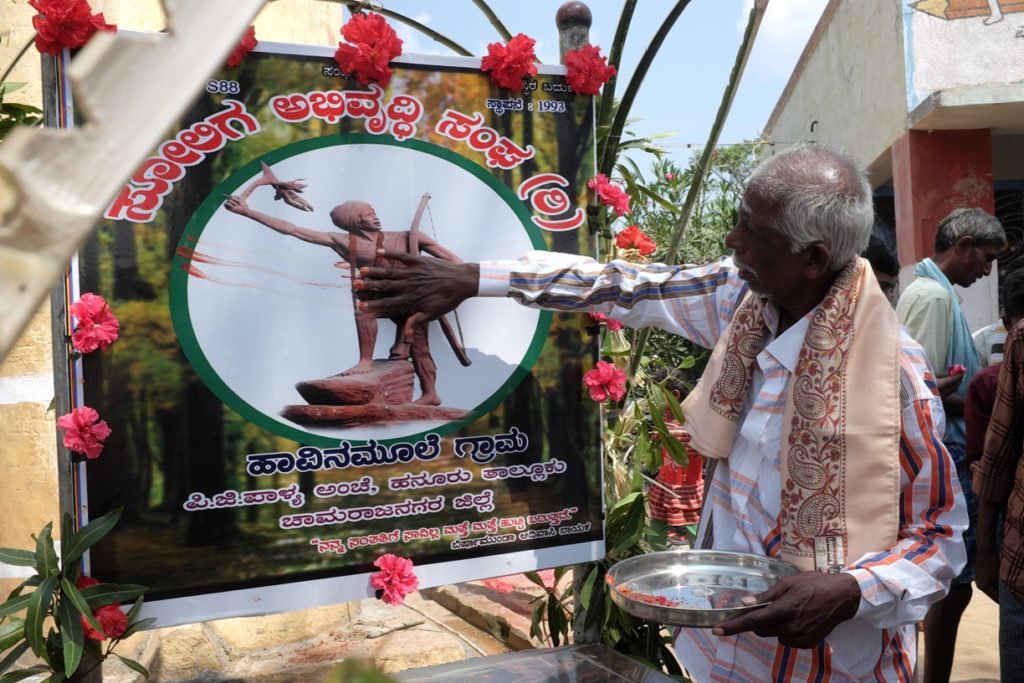
The visit ended with a traditional dance performance by the Soligas.

